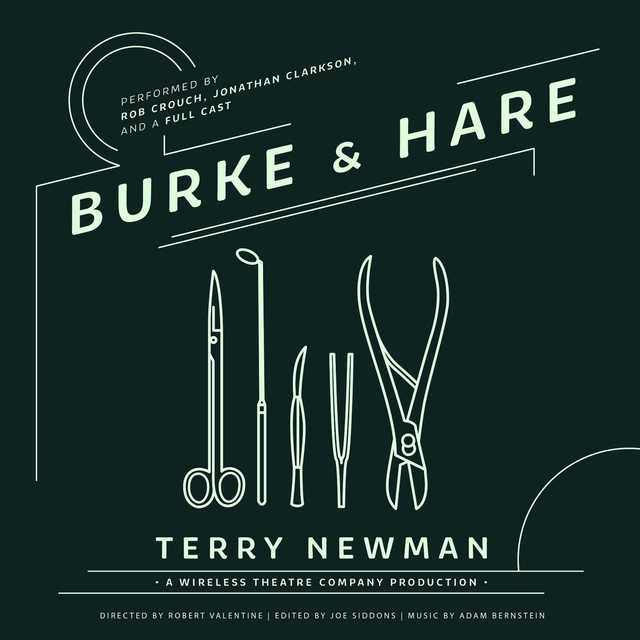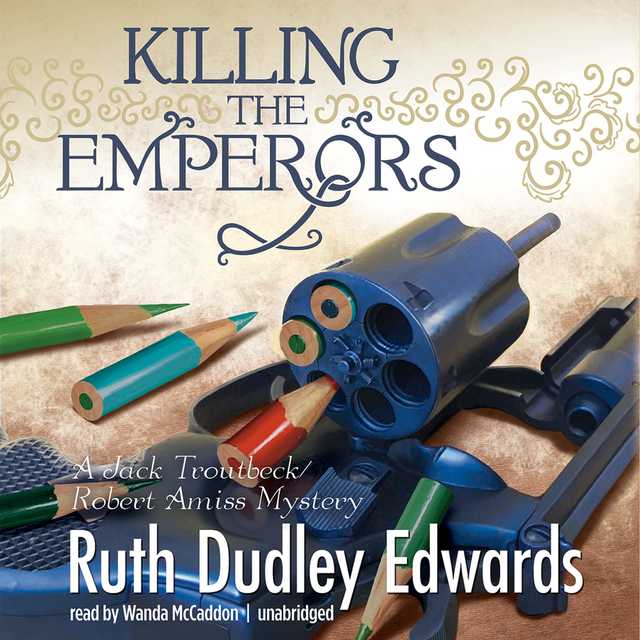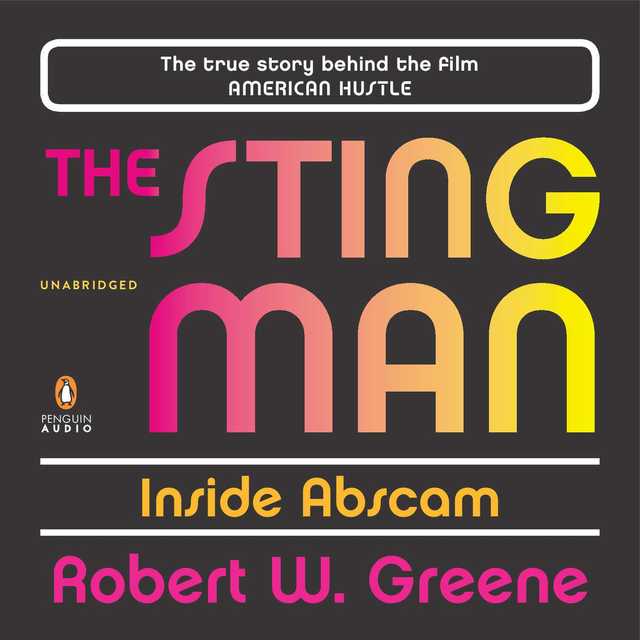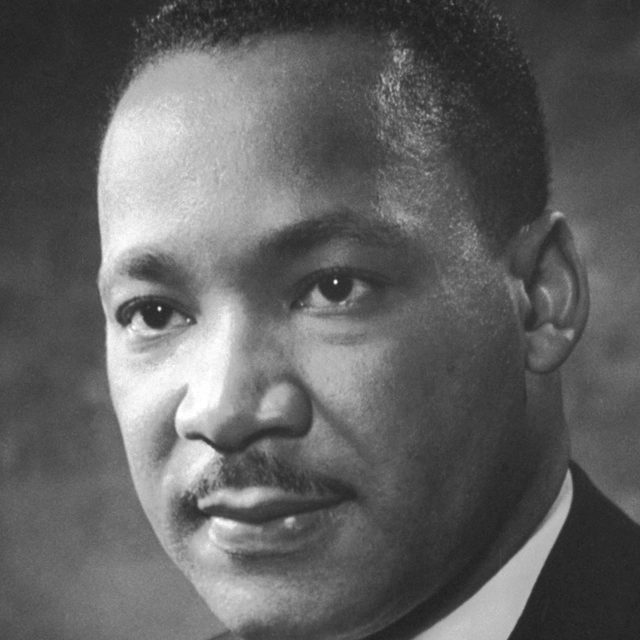Never Split the Difference Audiobook Summary
A former international hostage negotiator for the FBI offers a new, field-tested approach to high-stakes negotiations–whether in the boardroom or at home.
After a stint policing the rough streets of Kansas City, Missouri, Chris Voss joined the FBI, where his career as a hostage negotiator brought him face-to-face with a range of criminals, including bank robbers and terrorists. Reaching the pinnacle of his profession, he became the FBI’s lead international kidnapping negotiator. Never Split the Difference takes you inside the world of high-stakes negotiations and into Voss’s head, revealing the skills that helped him and his colleagues succeed where it mattered most: saving lives. In this practical guide, he shares the nine effective principles–counterintuitive tactics and strategies–you too can use to become more persuasive in both your professional and personal life.
Life is a series of negotiations you should be prepared for: buying a car, negotiating a salary, buying a home, renegotiating rent, deliberating with your partner. Taking emotional intelligence and intuition to the next level, Never Split the Difference gives you the competitive edge in any discussion.
Other Top Audiobooks
Never Split the Difference Audiobook Narrator
Michael Kramer is the narrator of Never Split the Difference audiobook that was written by Chris Voss
Chris Voss is one of the preeminent practitioners and professors of negotiation skills in the world. He is the founder and principal of The Black Swan Group, a consulting firm that provides training and advises Fortune 500 companies through complex negotiations. He currently teaches at the University of Southern California’s Marshall School of Business and Georgetown University’s McDonough School of Business, and has lectured at other leading universities, including Harvard Law School, the MIT Sloan School of Management, and Northwestern University’s Kellogg School of Management.
About the Author(s) of Never Split the Difference
Chris Voss is the author of Never Split the Difference
More From the Same
Never Split the Difference Full Details
| Narrator | Michael Kramer |
| Length | 8 hours 7 minutes |
| Author | Chris Voss |
| Category | |
| Publisher | HarperAudio |
| Release date | May 17, 2016 |
| ISBN | 9780062471253 |
Subjects
The publisher of the Never Split the Difference is HarperAudio. includes the following subjects: The BISAC Subject Code is Business Communication, General
Additional info
The publisher of the Never Split the Difference is HarperAudio. The imprint is HarperAudio. It is supplied by HarperAudio. The ISBN-13 is 9780062471253.
Global Availability
This book is only available in the United States.
Goodreads Reviews
James Q.
April 04, 2018
I'm sorry, but it seems you're looking for a review to help you decide if you Really want to read this book--if it's worth your time--or not. Wondering if somebody would be kind enough to provide you with that one review which would appeal to your tastes.I have EXACTLY what you're looking for, but why would I provide it for you? I'm thinking No. Go ahead: tell me. Why would I bother saving your time with an eloquent and thorough review that would Definitely appeal to you and surely help you decide? Go ahead: tell me.Are you done?The answer is the same: it ain't happening. It seems you're wasting your time. The answer is a big, fat No.What now?It seems you're a little stuck right now, doesn't it? My answer doesn't sound it'll change anytime soon--I mean, I'm not the kind of guy who keeps checking his reviews and keeps editing them accordingly, so now what? Looks like you could use some of the tips found in this book. Wasn't it about negotiating?Hmm. . .
Mark
September 20, 2016
One of the best books I've read over the last few years. In my opinion, the title does NOT do it justice. While this is applicable to negotiating, and the title DOES highlight a critical component, this book is valuable to MANY types of negotiating, even situations that we may not consider to be negotiating... things that happen every day. This borrows heavily from behavioral and neuro science areas to get at the way people work (all of us). It of necessity helps gain trust. It helps in understanding others and what their true motives are, so you can meet their needs. This can be applied whether you are negotiating for just helping someone. It's an amazing book... there are only about 4 books that I will repeat (maybe more than a 2nd time). This is DEFINITELY one of them. Thanks for an amazing lesson and reference, Chris! You're amazing.
Rita
August 28, 2016
I actually TOOK NOTES on this book.
Mario
August 10, 2016
Fantastic book. While I recommend it to everyone, I almost don't want to give away a competitive edge and prefer no one reads it--it's that good!
Annie
December 04, 2018
The book should have been titled "Start at No in Negotiations." Often, a "no" means "wait" or "I'm not comfortable with that." Probe deeper and listen carefully to uncover key information behind the "no" (such as "I want to but I don't have the money now" or "it is actually my spouse, not me, who doesn't agree"). This is a much more effective approach than trying to get the counterpart to say "yes," which the person might say just to get rid of you.The author, who is a former FBI hostage negotiator, included too many hostage stories. These situations where lives are on the line, the negotiator would never split the difference (e.g., you take 2 hostages and I take 2 hostages) and hence, the book title. But for everyday situations (like negotiating with a family member, buying a car, or working with colleagues), the stories aren't that useful and such a perspective on negotiations isn't practical.I recommend starting with Chapter 9 to understand the types of people in negotiations:Analyst - methodical and diligent; need time to go over facts and consider the optionsAccommodator - builds rapport through a continuous free-flowing exchange of information; not necessarily focused on the desired outcomeAssertive - direct and candid; getting it done quickly is more important than spending more time on getting it done rightThen start from the beginning and practice the skills, including:Mirror - repeat the last three words (or the critical one to three words) of what someone has just said to draw out more information from the personLabel - validate someone's emotions and fears by acknowledging it (such as "it seems like you feel you're not being appreciated")Accusation List - list the worst things the counterpart could say about you (such as "you probably think I don't spend enough time on this project") and give statements to alleviate that concern (such as "You can trust me to do my part without supervision" and "we all want this project to be successful").Ask questions, collect information, and consider creative ways to get to your goals (such as non-monetary items - amenities, upgrades, positive reviews, and referrals). There is much more in the book that goes through the nuances of what to say, how to say it, and how to behave. It is a book that you need to read slowly, take notes, and practice the tips before moving on to the next chapter.
ScienceOfSuccess
November 26, 2017
tl;dr My animated summary of Never Split the Difference is available here: https://youtu.be/pWu6ie-QXjIChris Voss is a former FBI hostage negotiator. If you want to learn how to negotiate, he’s your top teacher. Every chapter in his book is a lesson. Each of them feels like an episode of some crime TV series. Every lesson is based on a real-life example from author’s involvement with hostage negotiations. After the storytelling, Chris explains which negotiating techniques worked and which didn’t. At the end of each chapter, there is a nice wrap-up of the key lessons learned.The author discovered that the same techniques he used in life and death negotiations can be applied to everyday conflicts. Whether you are negotiating with kidnappers, trying to get a raise, or just negotiating “bedtime” with your kid, the principles stay the same. The main rule of negotiations is to remember that you’re dealing with a person who wants to be appreciated and understood.“Never split the difference” is an impressive book, filled with practical knowledge. This is not theoretical science. All of those advices were proven right when someone’s life was on the line. You can’t read it like a textbook. This book is written like a thriller. It’s very absorbing and easy to read. After finishing it I feel like not only my negotiation skills improved, but my social skills overall got better. I believe everyone should read it. Most people don’t wake up every day expecting negotiations, but who knows, maybe tomorrow you’ll have an opportunity to discuss something that’s important to you? I can guarantee that such talk could go WAY better if you read this book.Well deserved 5/5, I'd love to give 6stars here.
Cori
September 26, 2018
Recently, I've snagged a couple interesting titles off the Audible deal-of-the-day. This book popped up and the premise was just so interesting, I had to get it for a couple dollars. Chris Voss, the author, was a lead FBI hostage negotiator and haggled with terrorists, kidnappers, and a host of other bad dudes for a lot of years. I had an initial concern that Chris would be authoritarian and a tad bit self-enamored when I bought the book. The only reason for this being that most "bargain-like-a-boss" books I've read have been that way. But I figured, you don't get to be the FBI's lead hostage negotiator because of a false sense of importance so I figured I'd give 'er a go. And I'm so glad I did. This book appealed to me because I thought, "Hey, I can actually use this to negotiate with agitated patients." But holy moly, Miss Molly. You can use these techniques to smooth out rough conversations with a spouse or family member, ease a tense stand-off with your nine year old that doesn't want to go to bed, and use your super-secret-spy techniques on the vegetable vendor on the side of the road. It's nifty stuff. In reality, the information here is golden. I wasn't flipping through pages thinking, "I should write the world's most basic book on communication too and make money off it." This was actually valuable and evidenced-based. So many of these techniques are things I either use with aggressive/agitated patients, or will start using! Some of it, I realized, I use a rendition of, but not well, because I couldn't put my finger on the mechanics behind it. This is so simple, and yet, art. It breaks things down into simple concepts, but shows it takes practice to hone the skills (obviously, otherwise I'd be sauntering into that lead FBI negotiator position myself). Why should we start our questions with "what" and "how"? Why do we want the other guy to say no? When is it helpful to use the late night FM DJ voice vs. the chipper, friendly voice? I know the answers now. And they make a hecka-lotta sense.If you read one self-help, communication, non-fiction book this year, read this one! Also, the Audible narrator was a pleasure to listen to. He did a wonderful job. I'd rate this book a PG for some language and episodes of peril/violence.
David
September 29, 2020
This is a FANTASTIC book! The author, Chris Voss, is an expert hostage negotiator for the FBI. He can never "split the difference"--a euphemism for compromise--because to compromise in a hostage negotiation is to lose a life or many lives.Voss explains how to negotiate--not just for the FBI, but in any realm of life. So much of his advice sounds completely anti-intuitive. Just as an example, one should not be encouraged by the answer "Yes". It is much better to hear the answer "No". Why? A "Yes" means that your counterpart just wants to get rid of you. A "No" means that he is thinking for himself. You want to pose a question that gets a "No" response, but in a positive way. For example, "Do you want to give up on any chance of making a deal?" would be properly answered by "No", which means that your counterpart is thinking on his own, and not pressured to answer "Yes". Well, I am probably not explaining this very well, but Voss clearly explains his approaches. He shows how these negotiating tactics work for the FBI, and helps to save lives. These tactics can also be applied to day-to-day negotiations, like asking for a raise, buying a car, and even talking with your spouse.The book is filled with anecdotes that illustrate how negotiations can be very successful--or how ignoring his advice can be the route to failure. I highly recommend this book!I didn't read this book; I listened to the audiobook. The narrator, Michael Kramer, does an excellent job to bring this book to life!
Simon
September 04, 2017
A very practical, easy to read book on the various psychological tricks and techniques you can use in persuading people to see things your way. I was recommended to read this with regards to negotiating with brands (making sponsored video content) and it has certainly beefed up my skillset. I've actually already used a bunch of tips from this book outside of formal negotiations, and I can confirm that much as some of the tricks sound unnatural on paper they really do work!As I say, the book is very readable with punchy prose, and the author Chris Voss punctuates each chapter with relevant (and often gripping) anecdotes. To be honest, the only thing that's preventing me from giving this a five star review is a lack of 'wow factor'. This is a book that states its purpose, knows what its talking about, and accomplishes the goals it sets out. But that's it. It wasn't life-changing, but it was very good.
Yevgeniy
June 02, 2019
Crap title, GREAT book. The premise: the FBI's former chief international hostage negotiator (what a job title!) shares what he learned about negotiation throughout his career. These are the lessons the FBI has learned the hard way—those strategies that have been found to work when people's lives depend on it. And these strategies work not only for hostage negotiation, but in the types of negotiations you come across throughout life: asking a boss for a raise, convincing your kids to take out the trash, haggling over the price of a car, etc. I found a lot of valuable insights in this book. So much, that it took me a few weeks to find the time to jot down all my thoughts here, and it'll take me even longer to internalize it all and start using it regularly. The author now runs a consulting company, so a few bits of the book felt like a marketing pitch, but the vast majority seemed like well thought out, actionable advice.Some of my favorite take aways:* Every person is driven by several primal urges in a negotiation: the need to feel safe; the need to feel in control; the need to be understood. Your goal in a negotiation is to gather as much information as possible to best meet these needs. Most of the items below touch on these basic needs. * Tactical empathy: deeply understand what other person is feeling and what’s driving them. However, understanding that person is not the same as agreeing with that person or feeling sorry for them—that’s sympathy. You want empathy, because when you can understand what's driving someone, you'll be far better at negotiating with them.* There are three "voices" you typically want to use in a negotiation. The first voice, and the one you should use by default, is your positive/playful voice: the voice of an easygoing, good-natured person, that is light and encouraging; relax and smile. The second is the late night radio DJ voice: low, smooth, calm, and showing that (a) you're relaxed and confident because (b) you are in control. And the third is the direct/assertive voice, similar to a drill sergeant. You very rarely use the third one.* Mirroring: repeat back to the person the last thing they said, or the most important few words in their last sentence, but use voice intonation to indicate that you want them to expand on that topic—that you're seeking clarification. It gets them to do more talking and feel heard. It gives you more information. * Labeling emotions: give names to the emotions the other person is expressing. Use the phrases "it seems like," "it sounds like," and "it looks like." Example: "It sounds like this is really frustrating you" or "It seems like you feel cheated." After providing the label, go silent. This prompts the other person to respond: either they'll agree ("yea, that's exactly it!") or they'll correct you ("I'm not frustrated, I'm..."), which case you'll understand them better. The book "Emotional Agility" also talks about labeling emotions as an effective way to better deal with your own feelings.* Call out the negative: list all the other person's charges against you up front. Call out all their fears, grievances, and problems, acknowledge them, respond to them, and then invite the other person to add to it. Then, _listen_, and don't judge. Instead, as the person adds other items, label each negative emotion, acknowledge it, and find a way to turn it into something positive. For example: "It seems like you're concerned that we're a small, relatively unknown company, and what happens if we suddenly go out of business or get acquired? Will you be left hanging? I think this is a valid concern, but the advantage of working with a small company is that we can move much faster, and our license ensures that if we disappear, you're going to be fine because of [...]." Get the barriers that block progress into the open as soon as possible so you can deal with them pro-actively. * Loss aversion: convince the other side they have something to lose if they don’t sign (and not only something win if they do sign). Humans are loss averse, fearing loss significantly more than valuing wins, so showing them what they lose can often be a bigger motivator than showing them what they gain.* Anchors: start off the bidding (yes, you can say the first number!) with an extreme value to "anchor" the negotiation towards the range that favors you. E.g., Offer just 50% of the asking price as the first bid. You can also use ranges to your advantage, with the actual number you want at one end, and your extreme bid at the other: e.g., offer a range of 50-75% of the asking price, with your desired price being at 75%. This can be even more effective if you bring up ranges from external data: e.g., "At company X they pay $YYY-$ZZZ for this role." This way, the conversation isn't just about you or your own greed/needs, but about market conditions.* Asymmetry: look for asymmetric trade-offs, such as something the other person can toss in that's cheap for them, but highly valuable for you. In most cases, money is valued equally, so this means looking for non-monetary terms. E.g., If you're a consultant negotiating with a law firm, you might be able to get them to mention you in their next journal/publication, which is cheap for them, but incredibly valuable marketing for you.* Calibrated questions: take one of your demands and phrase it as a question to make it less pushy. E.g., Instead of telling someone, "you can't take do X," you say, “what do you hope to accomplish by doing X?” Ask something that forces them to think through YOUR problem: e.g., "How am I supposed to know the hostage is OK?" These questions force the other person to have empathy for your situation. A particular powerful way to ask a calibrated question is to summarize the discussion so far and ask, "How am I supposed to do that?" E.g., "So you want me to sell this below my cost to produce it; how am I supposed to do that?" You can make these questions a request for help: "Can you help me figure out a way to get project X done by this deadline if project Y is also due at the same time?" Use these sorts of questions to guide the conversation. The responder will actually end up doing most of the talking, so they'll feel like they are in control (they'll also feel more committed to the solution, as they will be actively helping to come up with it!), but you're actually guiding them, and forcing them to see things your way. After all, by answering your calibrated questions, they have to make your obstacles theirs and come up with a solution—YOUR solution. A few notes: (a) The question you ask must be *open ended*; it' can't be a yes/no question or a quick factual question, otherwise, they'll answer without thinking, and expect something in return. (b) Don't accuse the person or attack them in the form of a question; instead, guide them to think through the blockers for you. (c) Most of the questions should be "what" and "how" questions; why is often accusatory, so you probably want to avoid it. Examples:What makes you ask?What about is important to you?How can I help make this better for us?How would you like me to proceed?What is it that brought us into this situation?How can we solve the problem?What’s the objective / What are we trying to accomplish here?How am I supposed to do that? * Aim to not only get a "yes," but also a "how." The how is the implementation. If you just get a "yes," but no implementation details, then you may still fail. Use calibrated questions to ferret out the how. E.g., How am I supposed to do that? How will we know we’re on track? How will we address things if we find we’re off track? How does this affect the rest of your team? How on board are the people not on this call? What do your colleagues see as their main challenges in this area?* Backup listener: someone who joins negotiations just to listen. Their job is to listen between the lines while the other person talks. When you're the active participant, you'll often miss critical cues that a backup listener can spot.* Slow down. Most people go way too fast, but if you go too fast, the other person won’t feel like they are being heard. * Strategy for dealing with a "bulldog" who tries to aggressively roll over you: (a) Use your late night radio DJ voice. (b) Say "sorry": e.g., I'm sorry you're feeling so much pressure. (c) Mirror: make it clear you're seeking clarification. The other person will repeat their message, but in different words, perhaps calmer. (d) Listen silently. (e) Repeat. If you do this over and over, the other person will quickly calm down. If you are being attacked, slow down, pause, count to 10 if you have to: the goal is to let your emotions settle. Then use the previous steps and calibrated questions.* Don't be afraid of "no." No is the start of a negotiation—not the end of it. People want the power to say "no" (autonomy). Give them that power! Instead of avoiding "no" at all costs, try to look for a way to get an early "no" to make the other person feel comfortable and in control. Could be as simple as saying, "well, do you want this project to fail?" Another one that can work, especially if a customer has stopped responding: "have you given up on this project?" Sometimes, you want to intentionally get someone to say no, just to bring them into the conversation: e.g., intentionally mislabel an emotion.* There are three types of yes. The first is the "counterfeit yes," where someone says yes just to move the conversation along, but with no intention of carrying through with whatever they agreed to (e.g., if you push too hard or are too aggressive, people may say yes just to get you to shut up, but they'll weasel out of it later). The second is the "confirmation yes," where someone agrees with something you said, but isn't necessarily going to do anything about it. The third, and the one you really want in a negotiation, is the "commitment yes," where the person intends to follow through. You may want to aim for three such yesses to really flush out any last reservations and to get the person 100% on board.* Look for a "that’s right!" from the other person. If you can get them to say "that's right!" it means you've finally understood them and they know it. One way to get that is to present a summary of what you understand to be that person's goals/needs/position. If you get it right, the person will agree—and they'll agree with you without feeling like they are "giving in." But it's an agreement and it makes them feel understood, which is huge. Note that while "that's right!" is very valuable, "you're right" is often a disaster. It's not about you; it's about them and their needs.* This book argues against "compromise." The argument is that compromises are lazy and avoid pain, but no one ends up getting what they really want. E.g., if the husband wants to wear black shoes and the wife wants him to wear browns hoes, then a compromise or splitting the difference results in the husband wearing one black shoe and one brown shoe—everyone loses. The reality is that good solutions require stress and pain. * Haggling techniques: (a) Figure out your target price. (b) Begin your bidding at around 65% of your target price; then go to 85%, 95%, 100%. The first jump seems really big, and each jump after that is smaller and smaller to make it feel like you're approaching your absolute ceiling. (c) Use non-round numbers; instead of offering $500, offer $512.32, as it makes it seem like you did an exact calculation, and that's truly your ceiling. (d) As they make counter-offers, use calibrated questions to have the person bid against themselves: "Thank you for your generous offer. I wish I could, but I just can't do that. How could I ?" * In a negotiation, the other part is NOT your enemy; not even in a hostage negotiation, let alone when negotiating salaries. The only enemy is the situation; the other person you're negotiating with is actually your partner in navigating this situation. * Hopes and dreams: Visualize what the other person wants out of life, and try to use those aspirations to persuade them. Display a passion for what that person wants and lay out a plan for getting them there. Draw a roadmap for how that person can achieve their dreams—change their perception of what's possible—and you will succeed.Phew. That's a lot of useful advice. Perhaps that's the biggest gotcha with the book: there's so much here that it's hard to know how to put it all together. I guess that's where practice comes in! Oh, and as always, I've saved a few of my favorite quotes:“Negotiate in their world. Persuasion is not about how bright or smooth or forceful you are. It’s about the other party convincing themselves that the solution you want is their own idea. So don’t beat them with logic or brute force. Ask them questions that open paths to your goals. It’s not about you.” “'Yes' and 'Maybe' are often worthless. But 'No' always alters the conversation.”“Negotiation is the art of letting the other side have your way.”
Petr
July 24, 2017
One of the most useful books I've ever read. Full of great tips, practical examples and surprising points about negotiating (without the other party feeling they've been cheated), which can be used in business, school, or any casual situation.A few points I've remembered:- Every negotiation starts with a "no". If you start with questions leading to "yes" (Do you want to help the world? Do you think we should stop animal abuse? ...), the other party will go into defense mode. By getting them to disagree early on, you'll establish boundaries and when they then say "yes", they really mean it (commitment yes).- Empathy is important. You can't negotiate without understanding what (and why) the other party wants.I've found this list of more notes you might find helpful, too: https://github.com/mgp/book-notes/blo...
Nikolay
April 09, 2021
I waited for almost a year before reviewing the book - it's a manual for achieving a goal and I wanted to make sure it worked in practice before I had an opinion.Never Split the Difference was my first book about negotiation and I found it both thorough and useful. It has a ton of examples, most of them relatable. While probably we all find hostage situations fascinating, those are not part of my daily routine and negotiation in my life is at much lower stakes.My learnings in the book fell into two main buckets:• Questions to ask myself and area to cover in every negotiation – this includes making sure I understand the other side's motivation and limitations, do enough research, make sure I know what's the highest price I am ready to pay.• Tactical tips – given that I am not super experienced in negotiations, there was a lot that was new to me. Calibrated questions, accusation audit for my side, ideas how to deal with naming a price, making current lack of agreement my fault, instead of attacking the price/belittling the product.Applying those ideas in practice turned out to be not as hard as I thought, so the return of investment of the book has been positive. An interesting side effect I noticed is that I don't avoid negotiation situations as much, because I feel a tiny bit more confident. I see this as another win.After all the praise, I’d like to offer a fair warning to future readers. Most strategies, and especially those relying on specific wording, are heavily dependent on the negotiation happening in the U.S. or in a similar enough culture. For example, both verbatim translations of “How am I supposed to do that?” and the general message sound ridiculous in Bulgarian. Another, similar example is trying to use the “I can't afford this” strategy – the other side shamed me for being poor :-) That said, I found the general framework to be universally applicable.“Never Split the Difference” is for you:✅ If you're new to negotiation.✅ Are okay with following a detailed framework/steps.✅ Want to understand the wider context around this framework, not just get a two-page HOWTO.Requires extra work if:🔸 You're not from a culture close enough to the U.S.
Bradley
May 23, 2020
Honestly, I got a weird feeling when I first read the title because it felt almost like a call to arms, like I was being told that the idea of compromise was utterly insane... and I was right. It is. But not for the sake of arguing for argument's sake. It's funny, but I really liked this book. Any book that has a call to arms like this but keeps a central tenant like "tactical empathy" and "Really, truly listening to someone" isn't crazy.And besides, it reminds me of the old story of Solomon and the two mothers who both insist that this one baby is their own and they're totally inconsolable about it. Wise old Solomon commands them to split the baby in half and let each mother take the half they want.That's TOTALLY LEGIT, man.The Solomon story isn't in this book but it ought to be. Instead, the author just went through Quantico and has done an amazing number of successful hostage negotiations and has helped a ton of people get exactly what they want in the business world.How? A hint: he's never belligerent. He listens, mirrors what they're saying, and stays in calm control. And when I mean he listens, he truly, actively tries to understand exactly where the other person is coming from... and then finds a solution. Often it's not even the thing the other person asks for, but simply what they need. Understanding, validation, reassurance that they won't be murdered by cops if they come out with their hands up. Those kinds of things. :)I simplify, of course, but this book has a ton of great practical exercises to diffuse situations and actively engage whomever you're in negotiations with. When there is a consensus, real progress can be made. That means welcoming every "no" at the table. That merely defines the context. Yes's are fine, but defining the context will get to the heart of what people really want... and oddly enough, it's usually a lot less than or completely different from what they initially demanded.Of course, it may take a bit more time to figure out the baby situation, but here's a little hint... the mother that screams and gives up her right to the baby probably loves the baby more. I'd trust her.
Simon
October 06, 2017
What a phenomenal book. Who would've thought we could learn so much from a field that could not be further from our life: hostage negotiation. In the end this is a book about listening. It's a book about making people feel listened to. This is a compilation of secret weapons that works like black magic when put into practise. Read the three first chapters, try it, and I promise you will not be disappointed.
Frequently asked questions
Listening to audiobooks not only easy, it is also very convenient. You can listen to audiobooks on almost every device. From your laptop to your smart phone or even a smart speaker like Apple HomePod or even Alexa. Here’s how you can get started listening to audiobooks.
- 1. Download your favorite audiobook app such as Speechify.
- 2. Sign up for an account.
- 3. Browse the library for the best audiobooks and select the first one for free
- 4. Download the audiobook file to your device
- 5. Open the Speechify audiobook app and select the audiobook you want to listen to.
- 6. Adjust the playback speed and other settings to your preference.
- 7. Press play and enjoy!
While you can listen to the bestsellers on almost any device, and preferences may vary, generally smart phones are offer the most convenience factor. You could be working out, grocery shopping, or even watching your dog in the dog park on a Saturday morning.
However, most audiobook apps work across multiple devices so you can pick up that riveting new Stephen King book you started at the dog park, back on your laptop when you get back home.
Speechify is one of the best apps for audiobooks. The pricing structure is the most competitive in the market and the app is easy to use. It features the best sellers and award winning authors. Listen to your favorite books or discover new ones and listen to real voice actors read to you. Getting started is easy, the first book is free.
Research showcasing the brain health benefits of reading on a regular basis is wide-ranging and undeniable. However, research comparing the benefits of reading vs listening is much more sparse. According to professor of psychology and author Dr. Kristen Willeumier, though, there is good reason to believe that the reading experience provided by audiobooks offers many of the same brain benefits as reading a physical book.
Audiobooks are recordings of books that are read aloud by a professional voice actor. The recordings are typically available for purchase and download in digital formats such as MP3, WMA, or AAC. They can also be streamed from online services like Speechify, Audible, AppleBooks, or Spotify.
You simply download the app onto your smart phone, create your account, and in Speechify, you can choose your first book, from our vast library of best-sellers and classics, to read for free.
Audiobooks, like real books can add up over time. Here’s where you can listen to audiobooks for free. Speechify let’s you read your first best seller for free. Apart from that, we have a vast selection of free audiobooks that you can enjoy. Get the same rich experience no matter if the book was free or not.
It depends. Yes, there are free audiobooks and paid audiobooks. Speechify offers a blend of both!
It varies. The easiest way depends on a few things. The app and service you use, which device, and platform. Speechify is the easiest way to listen to audiobooks. Downloading the app is quick. It is not a large app and does not eat up space on your iPhone or Android device.
Listening to audiobooks on your smart phone, with Speechify, is the easiest way to listen to audiobooks.





























